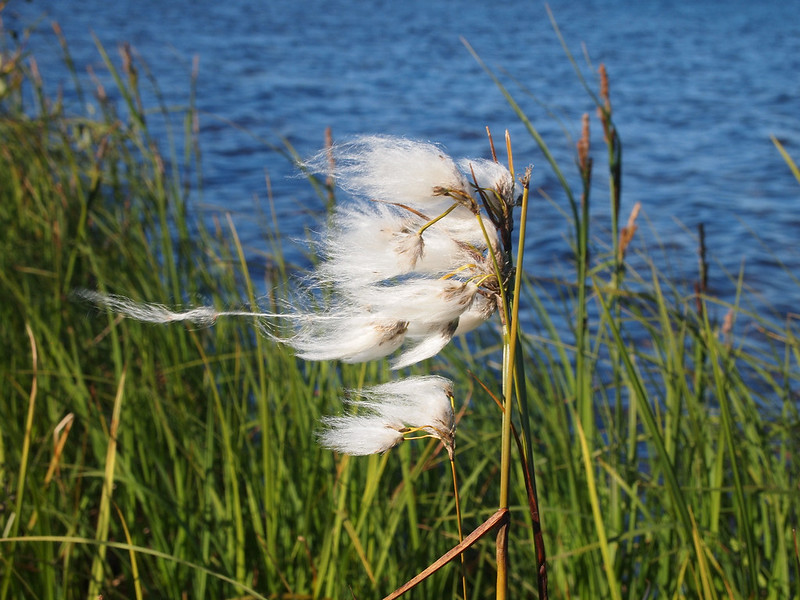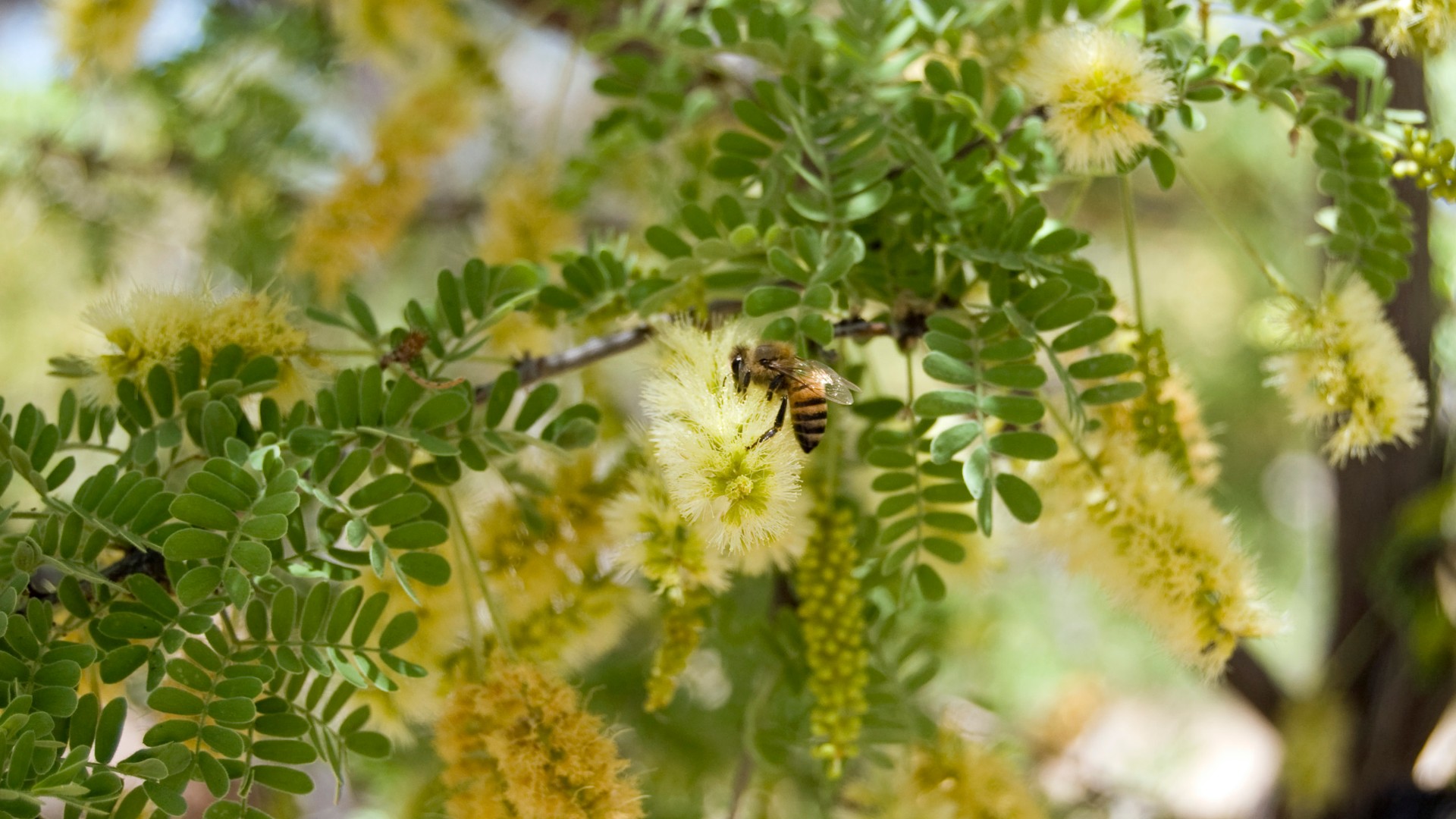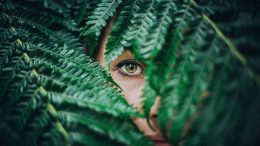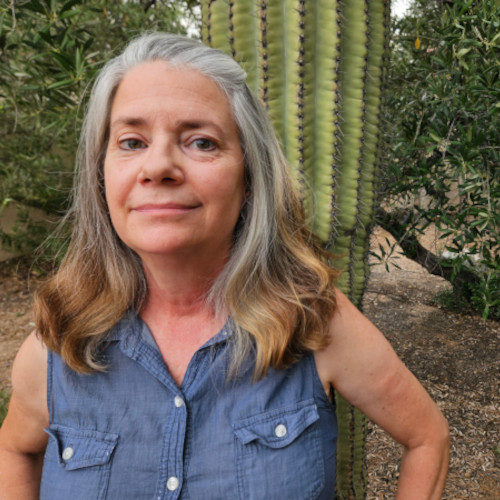When Kathryn Parsley taught biology to undergrads, she sometimes talked about Australia’s stinging tree, which is among the world’s most venomous plants — and can cause months of excruciating pain for anyone who approaches it.
“It’s incredibly dangerous,” she says. “If you even get close, its trichomes can get on you and it feels like your skin is on fire.” The sensation has been compared to being burned with hot acid and electrocuted at the same time.
The stinging tree got her students’ attention, and that was Parsley’s aim. Many people consider plants benign and boring, if they consider them at all. Most plants don’t exist for them as distinct species; instead they compose what some botanists call “a green curtain”— a generic backdrop for more interesting creatures, namely animals, preferably vertebrates, ultimately humans.
What Is Plant Blindness?
Parsley wrote her dissertation on the subject of plant blindness, a term coined in 1999 by American botanists James Wandersee and Elisabeth Schussler, who defined it as “the inability to see or notice the plants in one’s own environment.”
Several studies — including one Parsley conducted — have documented a difference in the visual attention people pay to animals compared to plants. When shown images in rapid succession, university students were better able to detect the animals and recalled more animal than plant names. There’s even evidence that some students didn’t perceive plants as being alive.

Because of its reference to vision, Parsley considers the term “plant blindness” ableist and suggests the term plant awareness disparity instead. It has also been called zoochauvinism and zoocentrism.
Whatever you call it, many people find plants unworthy of their consideration. Yet in terms of sheer volume, plants dwarf the rest of life on Earth’s surface. Plant biomass is estimated to be 450 gigatons on land, while animals account for only 2 gigatons. Plant-blind humans simply discard most of the plant information their eye-brain systems take in, processing information about something else instead.
Wandersee and Schussler attributed some of that apathy to the fact that plants, unlike animals, don’t have a face. Nor can they move or threaten us in the way animals can. But while these plant traits have been fairly constant over time, experts think plant blindness is on the rise.
So if plants haven’t changed, why have we?
Plants in Culture
As it turns out, we haven’t all changed. The rate of plant blindness varies across cultures. Most of the research on it has been done in the United States and United Kingdom, whereas “Indigenous people are very plant-oriented,” Parsley points out. “Some subcultures in the U.S. and outside the U.S. are very plant-oriented.”
It wasn’t that long ago that many people in Eurocentric cultures revered plants, too. But our relationship with plants has changed. Two hundred years ago, most people lived on farms. They grew and gathered their own food, so they had to know plants. Today most of us live in cities and towns. We don’t rely on our plant-identification skills in order to eat.

Kate Bergren is an associate professor of English at Trinity College in Connecticut who teaches a class called “Plants in Literature and Film.” It puts our relationship with plants front and center, something folks like William Wordsworth did in the early 19th century and we don’t do much in the 21st.
She wrote her dissertation and eventually a book, The Global Wordsworth, on the Romantic poet and his attitude toward plants.
“I got interested in how writers understood nature as being constituted by specific plants that they knew a lot about,” she says. “They had what we now think of as a scientific interest in plants themselves. In Wordsworth’s time, people had a lived practice of doing things with plants. He and his sister and his friends would go hiking and collect plants they thought were cool and plant them in their garden… They had a lived experience of doing stuff with plants.”
This, she says, reflects the values of the day: “The discipline of botany was a realm that average people, not just scientists, were really interested in, and poetry was a valid way to talk about discoveries in botany.”
Before the Romantics nature poetry was just that: a description of nature. “We read it today and it feels really boring, just line after line of description,” Bergren says. “Romanticism, in addition to its interest in nature, is also interested in the self, a recognizable contained self.”
Early in the Romantic Era, Erasmus Darwin (grandfather of Charles) offered an example of this kind of writing in his 1791 book-length poem, “The Loves of the Plants.”
“The poem goes through plants one by one, describing how they reproduce, using the language and imagery of courtly romance to describe the process,” Bergren says. “Lots of swains. Hundreds of pages of this. People were super interested in that work, people talked about it, people wanted to learn about plant reproduction. So much Romantic poetry is intertwined, discovery of the self with discovery of nature.”
The poem is virtually forgotten today — and not very good, Bergen adds — which further proves to her how much the culture has changed. “We’re still living in a time when interest in the self is paramount. [But] now it’s just the interest in the self.”
And while she is fascinated by these cultural shifts, many botanists are troubled.
Why Is Plant Blindness a Problem?
Plants supply the oxygen we breathe and the food we eat, serving as the base of the food chain. Yet many of our plants are faring poorly, and climate change makes them even more vulnerable. A 2023 report from Kew Royal Botanical Gardens estimates that 100,000 plant species have yet to be scientifically identified, and says 3 in 4 of these undescribed vascular plant species are already threatened with extinction.
But is this attributable to plant blindness? Kristine Callis-Duehl thinks so. She is the executive director of Education Research and Outreach at the Donald Danforth Plant Science Center in St. Louis, and she sees plant blindness on the rise.
“First and foremost, our habitat consists of plants,” she says. “Yet the general public largely doesn’t notice plants in their environment and therefore don’t appreciate how important they are to the biosphere and society, let alone how to identify a specific plant. People are failing to prioritize conservation or protect local areas because they don’t see the plants as important.”

When humans overlook plants, they also overlook their importance to human affairs, from food security to cultural preservation to the source of most medicines we use today, says Callis-Duehl.
“If you can’t identify the role of these plants, you aren’t seeing biodiversity. You’re just seeing a sea of green and not preserving what’s crucial to safeguard our ecosystem.”
She works with a lot of students in the Midwest who can’t tell the difference between a field of corn and a field of soybeans. “Is this kind of plant knowledge fundamental to the economy? No. But it is fundamental to being an informed citizen and making good choices,” she says. “If you don’t know the different plants, you don’t know how water runoff is affecting your natural resources. I’ve seen forest areas that became a dumping ground for everything from furniture to cars to bags of trash — anything that was no longer wanted or needed and too expensive to dispose of properly. They say, ‘It’ll just degrade into the forest.’ They don’t know the forest is alive.”
Callis-Duehl wants to reverse this trend, but here too, she encounters obstacles.
“We submit an enormous amount of National Science Foundation grant applications every year. We say we want to expose kids to careers in plants. The rejections are guaranteed to ask, ‘Why is this only focused on plants? Why not animals? Why not humans?’ … These grant reviewers are faculty experts, and yet their plant awareness disparity is so high.”
Can Plant Love Be Taught?
“The best way I’ve seen to overcome plant blindness is to have somebody really passionate about plants teach you,” Parsley says. “If you have a teacher in fifth grade who makes you do a leaf collection, like I did, then you’re more likely to have more plant awareness. If you don’t get exposed to them through school at the K-12 level, you may never be exposed to them or develop much plant awareness.”
Our K-12 education system centers animals far more than plants, Parsley argues. If a biology textbook is choosing between an example of a plant or animal to illustrate a concept, it almost invariably goes for the animal.
And very few college students study plants either.
When Parsley taught biology to college students, plant blindness was pervasive. “It’s almost become a running joke in the botany community, with each new crop of undergraduates complaining, ‘I don’t know why we have to learn about plants.’ Those anecdotes are a dime a dozen.”
Yet when she told students about an extraordinary plant such as the fierce stinging tree, “they were like, ‘oh, this is so cool, I didn’t know it could do that.’”
View this post on Instagram
Outside of the education system, there are other opportunities for people to connect with plants. Parsley thinks botanical gardens are great, if you’re lucky enough to live near one. But those often lure plant enthusiasts — in other words, they’re preaching to the choir. And while many Americans garden, many focus on a few select plants like tomatoes, which are grown in 86% of home gardens in the United States.
Still, Parsley grants that not every person who loves plants hails from a plant-oriented culture.
“We don’t know why some people get the plant bug,” she says. When doing her dissertation research, she found that people who spent a lot of time outdoors scored less on PAD. She also thinks childhood events matter, from visiting an apple farm or a forest to picking strawberries. Parsley’s grandfather had a garden, her mom had houseplants, and “I was just old enough to get kicked outside. All of those are contributing factors.”
Other factors contribute to plant blindness. The world is a far more urban place than it was in 1802 when Wordsworth wrote about daffodils in “I Wandered Lonely as a Cloud.” But as Bergren points out, plants exist in cities too, from weeds in sidewalk cracks to potted plants on a fire escape.
“I probably wouldn’t chalk it up entirely to urbanization,” she says. “I think there is an inattentiveness that certainly causes plant blindness but causes a lot of different kinds of blindness and an inability to see what’s right in front of you. The inattentiveness I’d chalk up to lots of features of modern life.”
First on that list? Our obsession with our phones — which, ironically, can also help people fight their plant blindness with apps like Leaf Snap and Plant Net.
Bergren is doing her part to combat plant blindness. This semester, for the first time, she’s asking her lit students to pick a plant on Trinity’s tree-filled campus (designated an arboretum in 2023), write about it each week, and see it.

Previously in The Revelator:
The Extinction Crisis in Watercolor and Oils: Using Art to Save Plants


